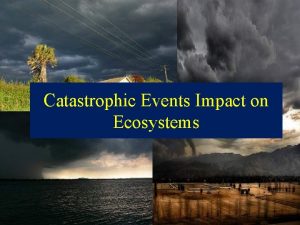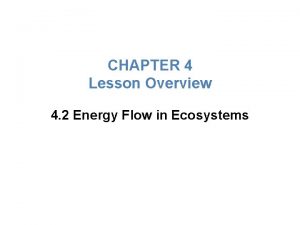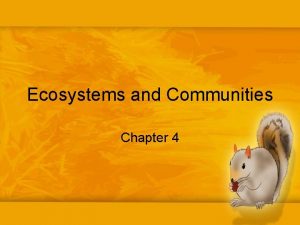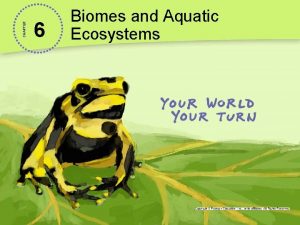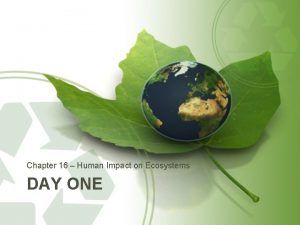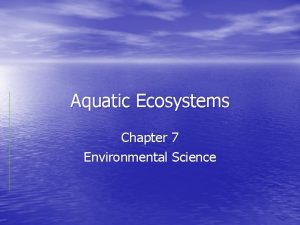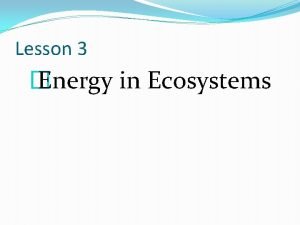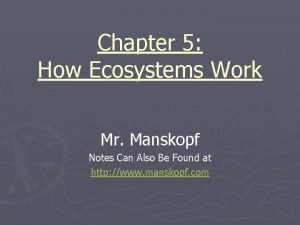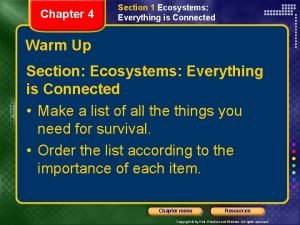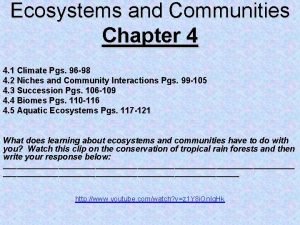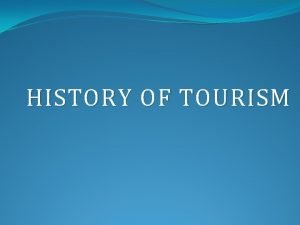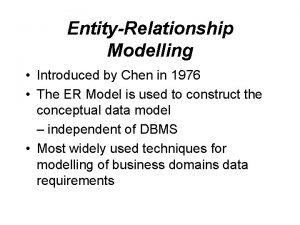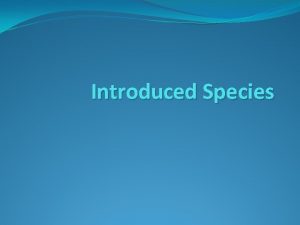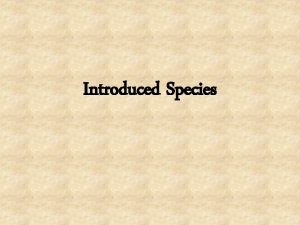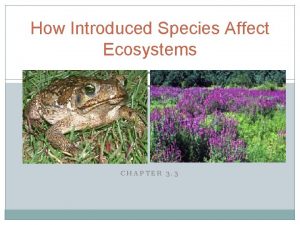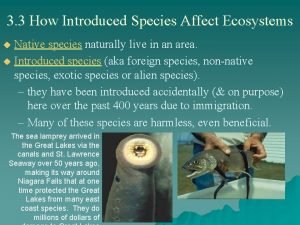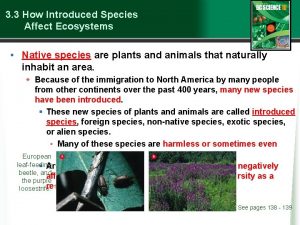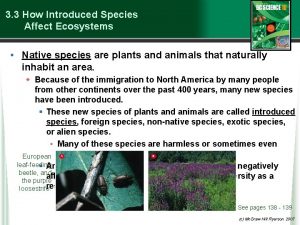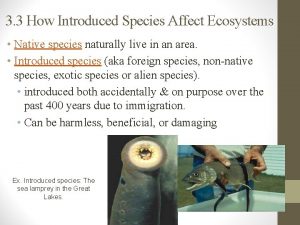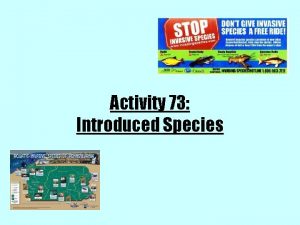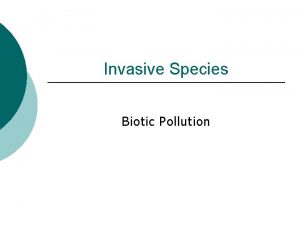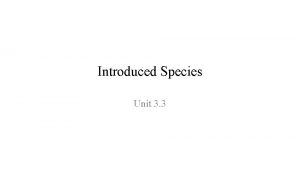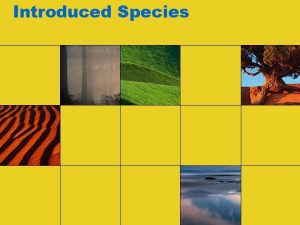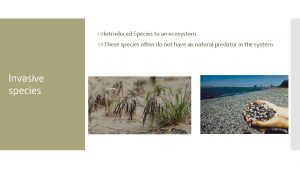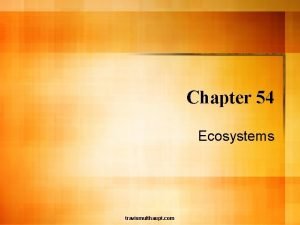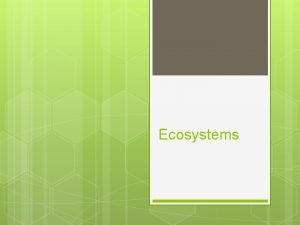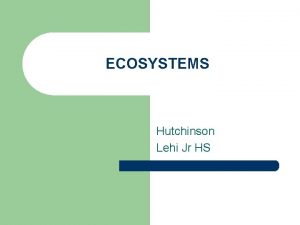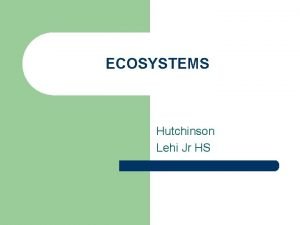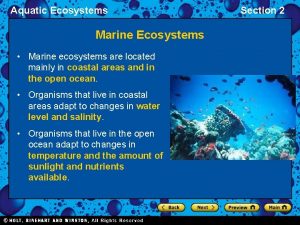Chapter 3 3 How Introduced Species Affect Ecosystems






















- Slides: 22

Chapter 3. 3 How Introduced Species Affect Ecosystems

Road map for today q Go over and mark WB pages 46 -49 q. Warm up game q. Native vs. non-native species q Invasive species and their impacts (4) q Workbook pages 52 -55

What’s happening here?

Warm-up game: Name That (Invasive) Species

Warm-up game: Name That (Invasive) Species

Warm-up game: Name That (Invasive) Species

“A public health hazard, hogweed's clear, watery sap has toxins that cause photo-dermatitis. Skin contact followed by exposure to sunlight produces painful, burning blisters that may develop into purplish or blackened scars. ” -Noxious weeds, King County, Washington http: //www. kingcounty. gov/environment/animals. And. Plants/noxious-weeds/weedidentification/giant-hogweed. aspx

Warm-up game: Name That (Invasive) Species

Warm-up game: Name That (Invasive) Species Video http: //www. youtube. com/watch? v=g. Fch. SGI 0 j. B 4


Native species vs. non-native species • Native species are plants and animals that naturally inhabit an area • Introduced species new species of plants and animals introduced accidentally or on purpose – A. K. A. foreign species, non-native species, exotic species, or alien species – Many of these species are harmless, or sometimes even beneficial – Occurred due to immigration over past 400 years

Invasive species • Organisms that can take over the habitat of native species or invade their bodies, thus weakening immune system.

Invasive Species • Often have high reproductive rates, are aggressive competitors, and lack natural predators in new habitats • Have potential to dramatically change ecosystems through – Competition – Predation – Disease and parasitism – Habitat alteration

Impacts of invasive species • Competition: invasive species compete against native species for essential resources such as food and habitat • Predation: invasive species can have more impact on a prey population than native predators, as prey may not have adaptations to escape or fight them off American Bullfrog

Impacts of invasive species • Disease and Parasitism: can weaken the immune response of an ecosystem’s native plants and animals, influencing humans • Allows opportunity for less dominant species to outcompete other species European Starling outcompetes western bluebirds for nesting habitat Norway Rat Eats ground-nesting sea birds’ eggs

Impact of Invasive Species • Habitat alteration: make a natural habitat unsuitable for native species by changing its structure or composition • • Change light level Decrease dissolved O 2 Change soil chemistry Increase soil erosion • E. g. , scotch broom acidifies soil

West Nile Virus • Introduced to U. S. in 1999, started causing deaths in birds and illness in humans in NY • Carried by mosquito How is this related to invasive species? http: //www. youtube. com/watch? v=EVk 5 rf. IA 4 k. U

Pick two • Silent Invaders • http: //www. youtube. com/watch? v=9 JQ 6 o. Hjpeq U • Spit • http: //www. youtube. com/watch? v=eqo. T 8 tc. Zq 6 k • Death Scent • http: //www. youtube. com/watch? v=8 Lk. RChk. UIR M

Habitat alteration • Eurasian Milfoil first ID’d in Okanagan Lake in 1970. • Forms wide, dense mats at lake surfaces • Cuts off sunlight • Interferes with boaters/swimmers • Can grow from fragments spreads!!!

Saving an Ecosystem Under Siege • Often requires human intervention to save established ecosystems • Garry Oak Ecosystem Recovery Team (GOERT) is trying to save several areas because Garry Oak trees: – Are a Keystone Species – May be better suited for future than Douglas fir forests • Scotch broom, and English ivy are biggest threats

Garry Oak Forests • 95% of the original ecosystem has been lost to urban development • The remaining 5% is threatened by invasive species.

Cleaning up the fragments of the chapter q. Native species q. Non-native species q. Invasive species q. Impacts of invasive species (4) q Workbook pages 52 - 55 q Next class…Ch 3 review! Coming up… Ch 3 Celebration of Learning!
 What impact does a tornado have on an ecosystem
What impact does a tornado have on an ecosystem Mountain lion keystone species
Mountain lion keystone species Chapter 3 section 3 aquatic ecosystems
Chapter 3 section 3 aquatic ecosystems Chapter 4 lesson 2 energy flow in ecosystems
Chapter 4 lesson 2 energy flow in ecosystems Ecosystems and communities chapter 4 answer key
Ecosystems and communities chapter 4 answer key Savanna biome plants
Savanna biome plants List few criteria used to classify aquatic biomes
List few criteria used to classify aquatic biomes Chapter 55 ecosystems and restoration ecology
Chapter 55 ecosystems and restoration ecology Chapter 42 ecosystems and energy
Chapter 42 ecosystems and energy Chapter 3 lesson 3 biomes and aquatic ecosystems
Chapter 3 lesson 3 biomes and aquatic ecosystems Chapter 16 human impact on ecosystems
Chapter 16 human impact on ecosystems Limestone ridges built by tiny animals
Limestone ridges built by tiny animals Which marine ecosystem contains the fewest producers
Which marine ecosystem contains the fewest producers Chapter 7 aquatic ecosystems test answers
Chapter 7 aquatic ecosystems test answers Chapter 5 how ecosystems work study guide
Chapter 5 how ecosystems work study guide Chapter 16 human impact on ecosystems
Chapter 16 human impact on ecosystems Chapter 55 ecosystems and restoration ecology
Chapter 55 ecosystems and restoration ecology Section 1 ecosystems everything is connected
Section 1 ecosystems everything is connected Which of the following tells you population density
Which of the following tells you population density Chapter 4 ecosystems and communities
Chapter 4 ecosystems and communities The co-author of congressman natividad in house bill 393
The co-author of congressman natividad in house bill 393 4800 bc popcorn
4800 bc popcorn It was introduced by chen in 1976
It was introduced by chen in 1976
